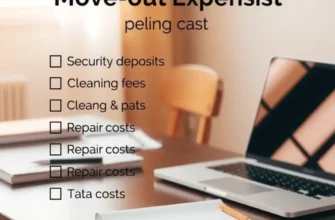Renting a home can be an exciting journey, especially for young professionals, first-time renters, students, couples, and families. Yet, if you’re a pet owner, one of the significant factors to consider while searching for your next rental is the pet deposit. Pet deposits can seem daunting, but understanding them can help you make an informed decision and even potentially save you money. The essence of a pet deposit is rooted in the landlord’s need to protect their property from any damages that pets may cause. However, knowing the ins and outs—including different types of deposits, their costs, and legal considerations—can empower you to negotiate a pet-friendly lease that suits your lifestyle without breaking the bank. Let’s explore everything you need to know about pet deposits to become a savvy renter.
Decoding Pet Deposits: What They Are and Why They Matter

Pet deposits can often seem like just another hurdle in the rental process, especially for pet owners who are eager to settle into a new home with their furry companions. However, understanding the purpose and structure of pet deposits can significantly ease the journey. Essentially, pet deposits are financial safeguards utilized by landlords to compensate for any potential damage caused by pets during the tenancy period. Unlike regular security deposits, which may cover a wide range of damages and unpaid rents, pet deposits are specifically earmarked for pet-related incidents.
A common misconception is that a pet deposit is simply an add-on to the standard security deposit. In reality, the specifics can vary greatly depending on legislation and the landlord’s policies. Some landlords opt for non-refundable pet fees, while others may require a separate pet deposit that is potentially refundable. It’s crucial to distinguish between these terms. A non-refundable pet fee is a one-time charge that the landlord retains regardless of any damage incurred, intended to cover the cost of flooring cleaning or general wear and tear. On the other hand, a refundable pet deposit is held as a guarantee against possible damage and is returned at the end of the lease, provided there are no repairs or extra cleaning needed.
Tenants may also encounter terms such as pet rent, a monthly fee added to the regular rent, contributing to the ongoing costs of maintaining a pet in rental units. This fee is often justified by the landlord’s insurance policies and the increased maintenance required in pet-friendly properties. While not directly categorized as a deposit, pet rent should be factored into your monthly budget as it constitutes a recurring expense rather than a one-time payment.
Understanding these nuances helps you anticipate and prepare for potential costs. The key is diligent research—review pet policies carefully before signing a lease, and don’t hesitate to ask the landlord for clarification on the terms of the pet deposit or fee. Familiarize yourself with local tenant laws, as some regions have regulations limiting the amount landlords can charge for pet deposits.
Furthermore, documenting the condition of the property upon move-in can safeguard your deposit. Taking thorough notes and photographs of any pre-existing damage can prevent disputes over what constitutes pet-related wear and tear versus general property decline. For tips on moving with pets, consider compiling a moving day survival kit to ensure a smooth transition.
When planned for appropriately, pet deposits serve the interests of both tenant and landlord, providing the latter with assurance against damage, whilst offering the tenant a sense of financial predictability. This clarity allows you to confidently negotiate terms and ensure that both your needs and those of your furry friend are met in your new home.
Navigating Lease Agreements: Essential Tips for Pet Owners

When it comes to lease agreements, understanding the terms is crucial for pet owners. Rental agreements with pet clauses need careful consideration to ensure both your rights and your pet’s needs are safeguarded.
First, let’s explore how to negotiate lease terms effectively. Begin by discussing any pet-specific clauses with your potential landlord. Before signing, clarify the differences between a “pet deposit” and “pet rent.” A pet deposit is refundable and used to cover damages caused by pets, whereas pet rent is often a monthly fee added to your rent. If unclear, transparently request this in writing. Having these defined can avoid misunderstandings later.
When discussing lease terms, always approach negotiations calmly and professionally. Present the benefits of renting to a responsible pet owner, such as reduced vacancy periods and potential for long-term tenancy. It may help to have references from previous landlords that highlight your pet’s good behavior. Additionally, many landlords might be convinced by offering to have carpets professionally cleaned or engaging in other maintenance on behalf of your pet.
Furthermore, familiarize yourself with your rights. Legislation varies by location, so specific knowledge about tenant rights concerning pets in your area is beneficial. Websites such as legal aid centers can provide detailed information. Recognizing these rights can be pivotal, especially if disputes arise.
A crucial point is to ensure all discussions and agreements on pets are documented. Written agreements protect you from sudden changes in the landlord’s stance on pet policies. For renters with multiple pets, it might be worth reviewing resources about handling lease agreements, ensuring coverage for all your pets’ needs, as seen in articles like renting apartments with multiple pets.
Be aware of common scenarios that might arise. Some landlords may impose breed or size restrictions. In such cases, it could be worth asking if a “pet interview” could be conducted to assess your pet on its behavior rather than its breed. Bring documentation like vaccination records, training certificates, or even a letter from a vet assuring the pet’s health and behavior. This proactive approach often eases landlords’ concerns.
Lastly, communication is key. Set up a meeting or call with your landlord to discuss any changes in your pet situation, like bringing another pet into the home or your pet’s health issues requiring specific accommodations. Clear, open communication fosters a positive tenant-landlord relationship, reducing potential tensions.
Aligning your needs with those of the landlords requires tact, patience, and diligence. With proper understanding and negotiation tactics, you can ensure your lease agreement reflects a fair setup for both you and your beloved pet. Keeping informed and prepared turns the often daunting lease navigation into a smooth, manageable process.
Final words
Recognizing the significance of pet deposits and the conditions surrounding them can enhance your renting experience. By arming yourself with this knowledge, you become more confident during negotiations and can better advocate for yourself and your pets. Whether you’re a young professional or a family just starting, understanding the nuances of pet deposits ensures you find a home that welcomes not just you, but your furry companions too. Always review your lease thoroughly, ask questions, and don’t hesitate to clarify terms with your landlord. With the right preparation, owning a pet in a rental setting can be not just feasible but satisfying.









